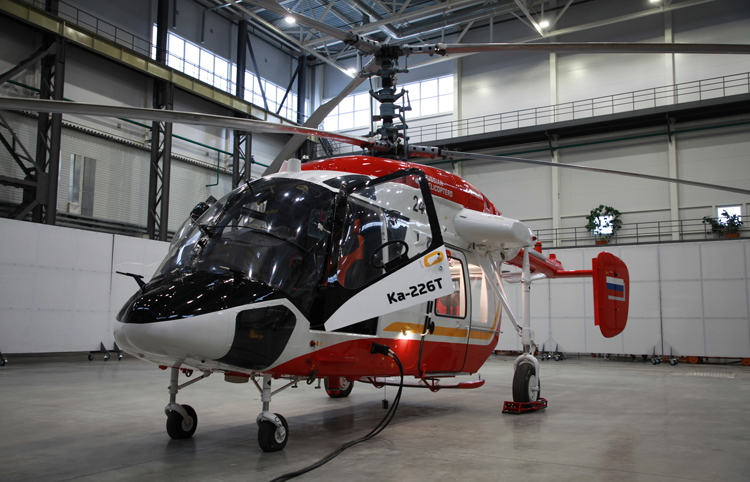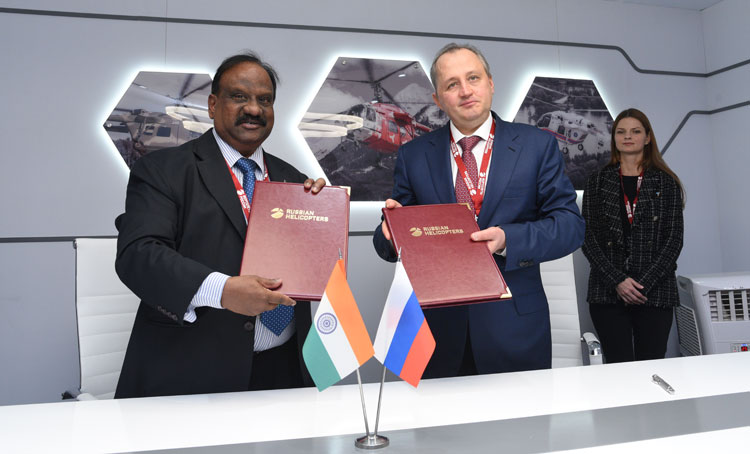INDIAN ARMED FORCES CHIEFS ON
OUR RELENTLESS AND FOCUSED PUBLISHING EFFORTS

SP Guide Publications puts forth a well compiled articulation of issues, pursuits and accomplishments of the Indian Army, over the years

I am confident that SP Guide Publications would continue to inform, inspire and influence.

My compliments to SP Guide Publications for informative and credible reportage on contemporary aerospace issues over the past six decades.
Procuring Kamov Helicopters
The Armed Forces urgently need 498 light utility helicopters to replace their obsolete single-engine Cheetah/Chetak fleets, which have been dogged by a high crash rate and serviceability problems. Overall, some 800 helicopters over the next decade are required by Indian security forces.
 |
The Author is Former Director General of Information Systems and A Special Forces Veteran, Indian Army |

With the continuing standoff with China in Eastern Ladakh and troops mobilised along the entire 3,488 km long Line of Actual Control (LAC), the Armed Forces are planning to approach the government to procure a minimum number of Kamov-226T helicopters from Russia, according to news reports of July 10, 2021. The Kamov-226T helicopters were already selected way back and the criticality in this category of helicopters is mounting, with case for replacement of Cheetah and Chetak helicopters stuck in red tape –an endemic bane of Armed Forces.
In December 2015 it was announced that Kamov-226T light-utility helicopter will be the first major ‘Make in India’ project after Russia inked the inter-governmental agreement for 200 x Kamov-226T helicopters at an estimated cost of over $1 billion. During the meeting between Prime Minister Narendra Modi and President Vladimir Putin at Goa in October 2016, the shareholders pact for the joint venture to manufacture the Ka-226T helicopters in India was signed; a private partner was part of this inter-government agreement.
Kamov-226Ts are multi-role helicopters, which can undertake reconnaissance, patrol and disaster relief operations as well as transport eight combat-ready soldiers with a maximum range of 600 km
Russia already had Hindustan Aeronautics Limited (HAL) as the Indian partner, but news reports of March 2017 revealed that the Ministry of Defence (MoD) was looking at having private sector Indian investors to share a part of the contract that India has to execute under the joint venture with Moscow. The price negotiations were a done thing but the delay in nominating the private Indian company other than the HAL was attributable to India, not Russia. In fact, when NSA Ajit Doval visited Russia in January 2017, Russian authorities asked him the reasons why the Kamov helicopter deal was being delayed by the Indian side.
The Armed Forces urgently need 498 light utility helicopters to replace their obsolete single-engine Cheetah/Chetak fleets, which have been dogged by a high crash rate and serviceability problems. Overall, some 800 helicopters over the next decade are required by Indian security forces which is beyond the capability of HAL.

The twin-engine Kamov-226T is to replace the single-engine Cheetah/Chetak, usually deployed for surveillance, dropping small loads and for rescue, especially for troops posted at forbidding heights such as the Siachen Glacier-Saltoro Ridge region. Kamov-226Ts are multi-role helicopters, which can undertake reconnaissance, patrol and disaster relief operations as well as transport eight combat-ready soldiers with a maximum range of 600 km.
The current operational availability of Cheetah and Chetak helicopters along our northern borders is already down to 50 per cent which will go down further. Their deployment is vital along the northern borders with China as well as the Siachen-Saltoro Ridge region. The new light utility helicopters are desperately required since the older Cheetah-Chetak helicopters will finish their extended life in 2023 and will need to be phased out. The replacement helicopters are needed not only for reconnaissance but also ‘sustenance’ of troops in forward areas especially high altitude.
Criticalities of the Services in terms of LUH are mounting rapidly and the LUH production of HAL can hardly meet the operational requirement
The three services (Army, Navy and Air Force) as well as the Coast Guard all need light utility helicopters. The Army, Navy and Air Force have been asking for light utility helicopters since almost 20 years now. Yet, it was only after the proposed procurement of 197 light utility helicopters was scrapped twice that the India-Russia inter-governmental deal to acquire 200 twin-engine Kamov-226T helicopters was inked in 2015 as mentioned above. Of these, 135 were meant for Army and 65 for the IAF.
As per current news the Kamov-226T project is still stuck due to disagreement over the proportion of indigenous content since Russia is reportedly offering “slightly lower” indigenous content than what India wants. But the question is why should it take five years after the inter-government deal was signed to sort out an issue like proportion of the ‘indigenous content’? Obviously, it is by design and more than evident after Russians asked NSA Doval during his visit to Russia in January 2017 why India was delaying the project.

Criticalities and lives of soldiers matter little to the bureaucrats. It was only Defence Minister George Fernandes who sent few MoD bureaucrats to Siachen Glacier because they were merrily sitting on the case file for procurement of snow scooters urgently needed by the Brigade deployed in Siachen Glacier area. Thereafter, the snow scooters were provisioned on forthwith basis. This should be standard operating procedure for every defence minister. But no other defence minister has bothered to do this for expediting the procurement process simply because they are dependent on advice of the very same bureaucrats.
Concurrently, another HAL project to build 126 light utility helicopters (LUH) for the Army and 61 for the IAF has also stagnating and delayed by several years. There are still some technical issues with these LUH including problems with their tail rotor systems in high-altitude areas. The latest is that the first six of these LUH are likely to be in inducted in December 2022 – that is if there are no further delays.
As can be deduced from the above, criticalities of the Services in terms of LUH are mounting rapidly and the LUH production of HAL can hardly meet the operational requirement. Under these circumstances what should the Armed Forces expect? Will the MoD accept the need to import a minimum number of Kamov-226T helicopters on emergent basis or operational criticalities will be brushed under the table under the ‘Make in India’ fever which is demonstratively crawling at least in the case of light utility helicopters.
On the other hand, after the jolt in Afghanistan due to rapid exit of US troops, own mission in Kandahar already shut and Herat under attack by Taliban after capturing the border crossing with Iran, government seems to have realised the vital need to reboot relations with Iran and Russia. The news item that the Armed Forces are planning to approach the government to procure a minimum number of Kamov-226T helicopters from Russia was possibly inserted on behest of the MoD. In such case, Armed Forces may well receive some Kamov-226T helicopters in fly-away conditions, same as the news is about importing Sprut tanks for the Army ex Russia.





